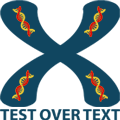Bridging the Gap: Process Meets Clause in Contract Management

In contract management, disputes and adjustments arise frequently. Understanding the difference between a claim and a change helps in handling contractual obligations effectively. A process-oriented approach, alongside a clause-oriented perspective, enhances dispute resolution and ensures smooth contract modifications.
1. Understanding Claims and Changes
A claim occurs when disagreement exists between parties regarding what is owed or whether anything is owed at all. If both parties reach an agreement, the issue transitions from a claim to a change, which becomes part of the contract adjustment process.
When a claim remains unresolved, it can escalate through multiple stages:
- Negotiation – Parties attempt to resolve the dispute directly.
- Mediation – A neutral third party facilitates a discussion.
- Arbitration – A binding decision is made by an arbitrator.
- Litigation – If all else fails, the case is taken to court.
While claims are commonly initiated by contractors against owners or subcontractors against contractors, owners can also file claims when they believe contractual obligations are not being met.
2. Process-Oriented vs. Clause-Oriented Approach
A clause-oriented approach ensures technical accuracy in contractual terms, obligations, and rights. However, relying solely on clauses may not always provide a resolution.
On the other hand, a process-oriented approach focuses on how to navigate claims efficiently—through negotiation, mediation, or arbitration. By integrating both methods, contract management can be handled with greater flexibility and efficiency.
3. Key Strategies for Managing Claims and Changes
To ensure a smooth process, consider the following strategies:
- Proactive Communication: Keeping all stakeholders informed reduces the likelihood of disputes.
- Documentation: Proper records strengthen a party’s position during claims or changes.
- Early Conflict Resolution: Addressing disagreements at the earliest stage prevents costly legal escalations.
4. Conclusion
By balancing a process-oriented and clause-oriented approach, organizations can manage claims effectively and incorporate necessary changes into contracts. A well-structured dispute resolution process minimizes risks, ensuring contract success.

Other topics about Contract Management :

